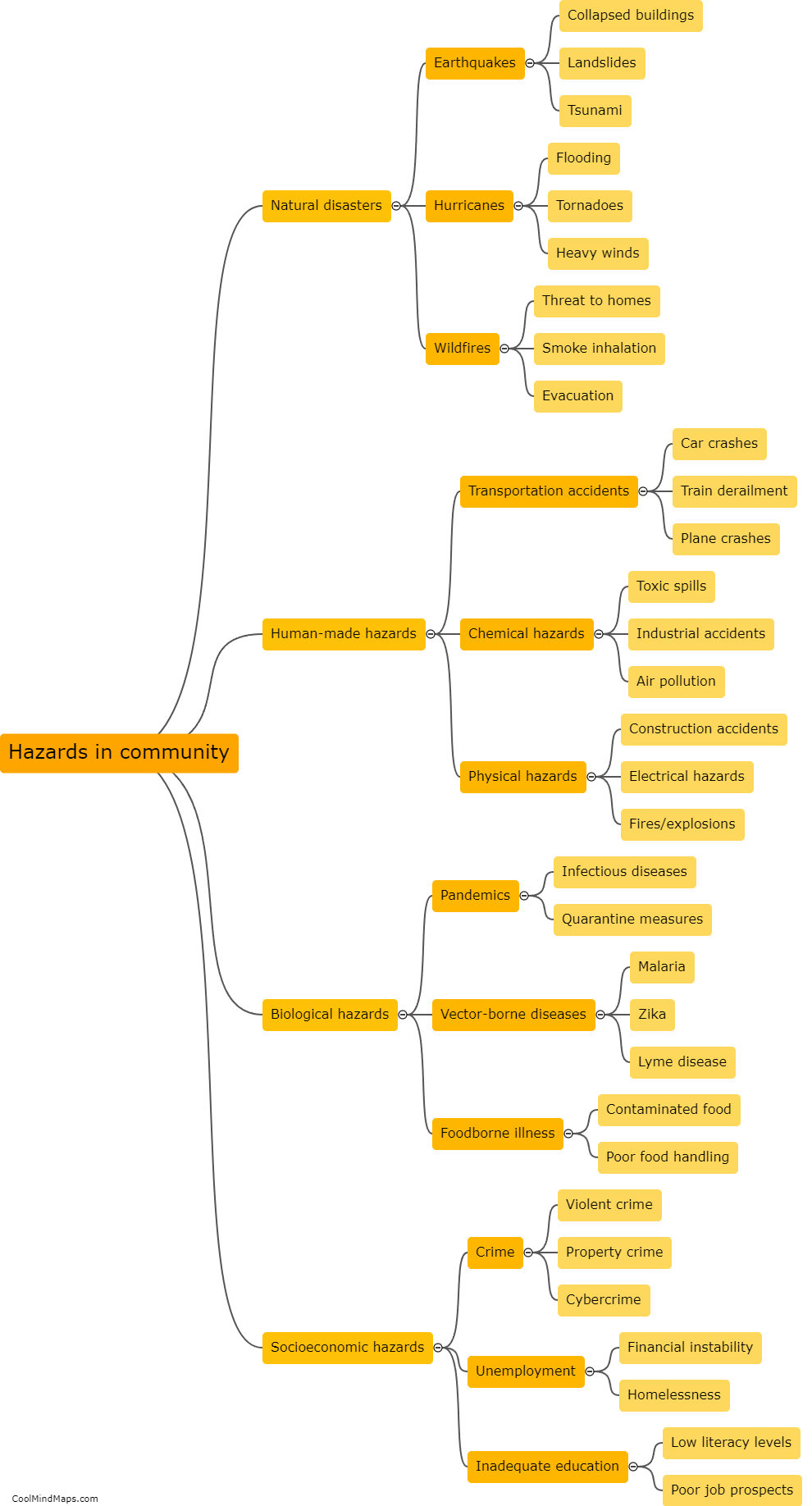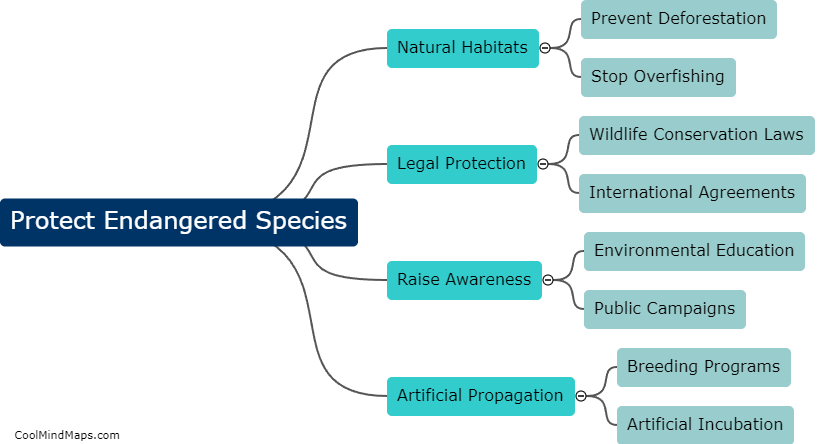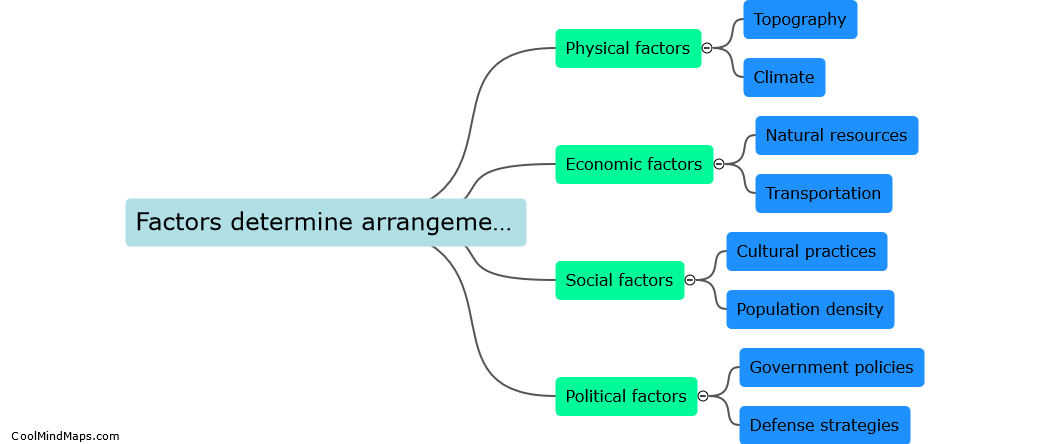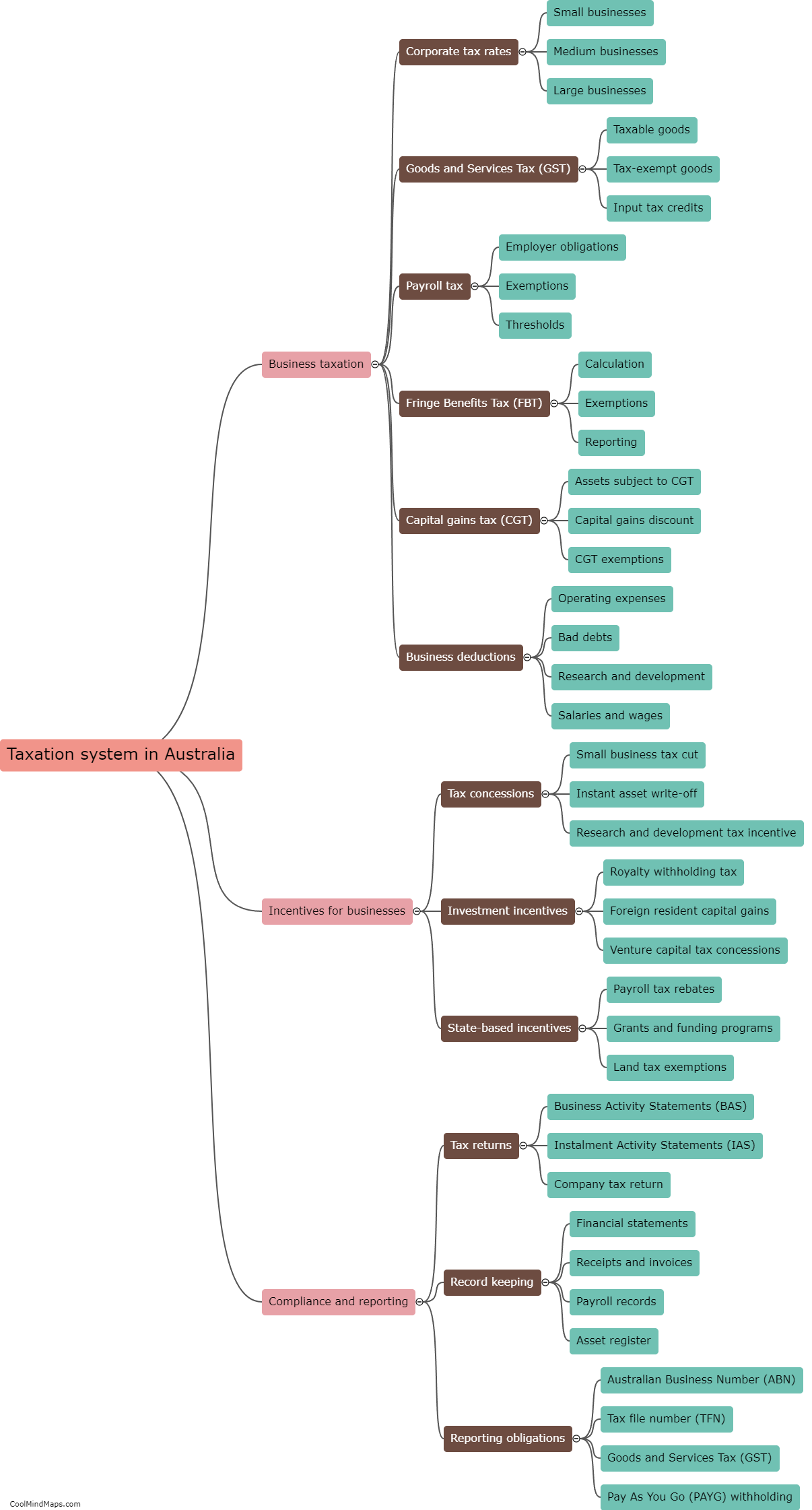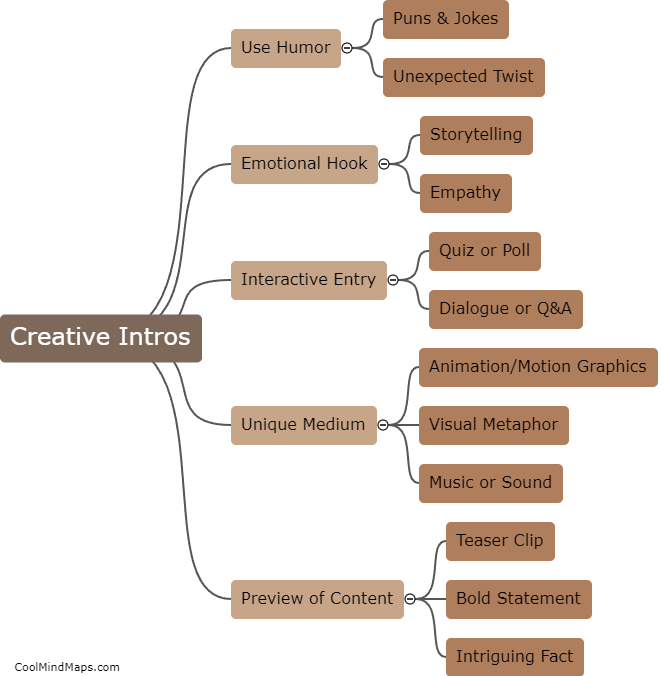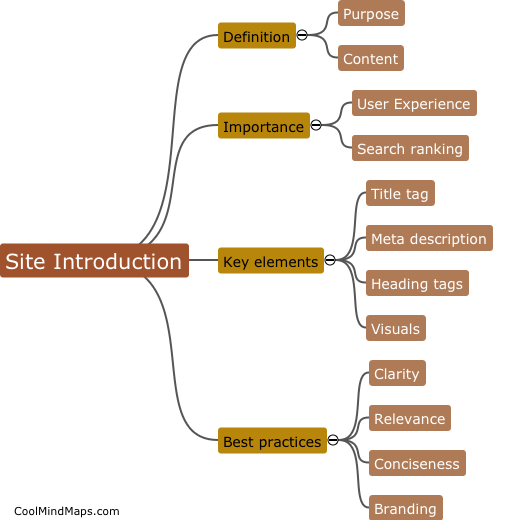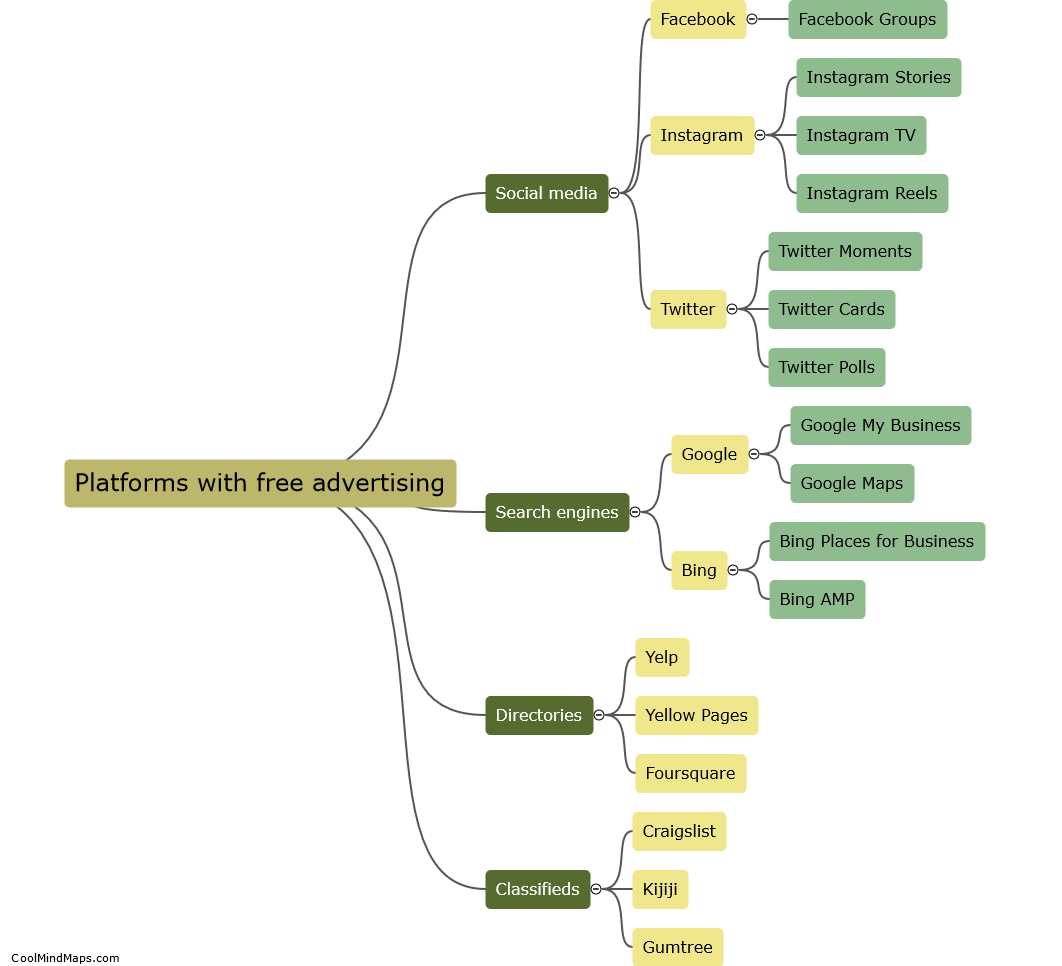What is the geology of Moose Jaw's river bottom?
Moose Jaw's river bottom is mainly composed of sedimentary rocks, formed by the accumulation of materials in ancient oceans, seas, and lakes. The most common rocks found in the area are sandstone, shale, and limestone. These rocks were formed over millions of years through various geological processes such as erosion, deposition, and compaction. The river bottom also contains fossils of marine animals, indicating that the area was once covered by shallow seas. The geology of Moose Jaw's river bottom has been studied and documented extensively, and it provides valuable insight into the region's geological history.
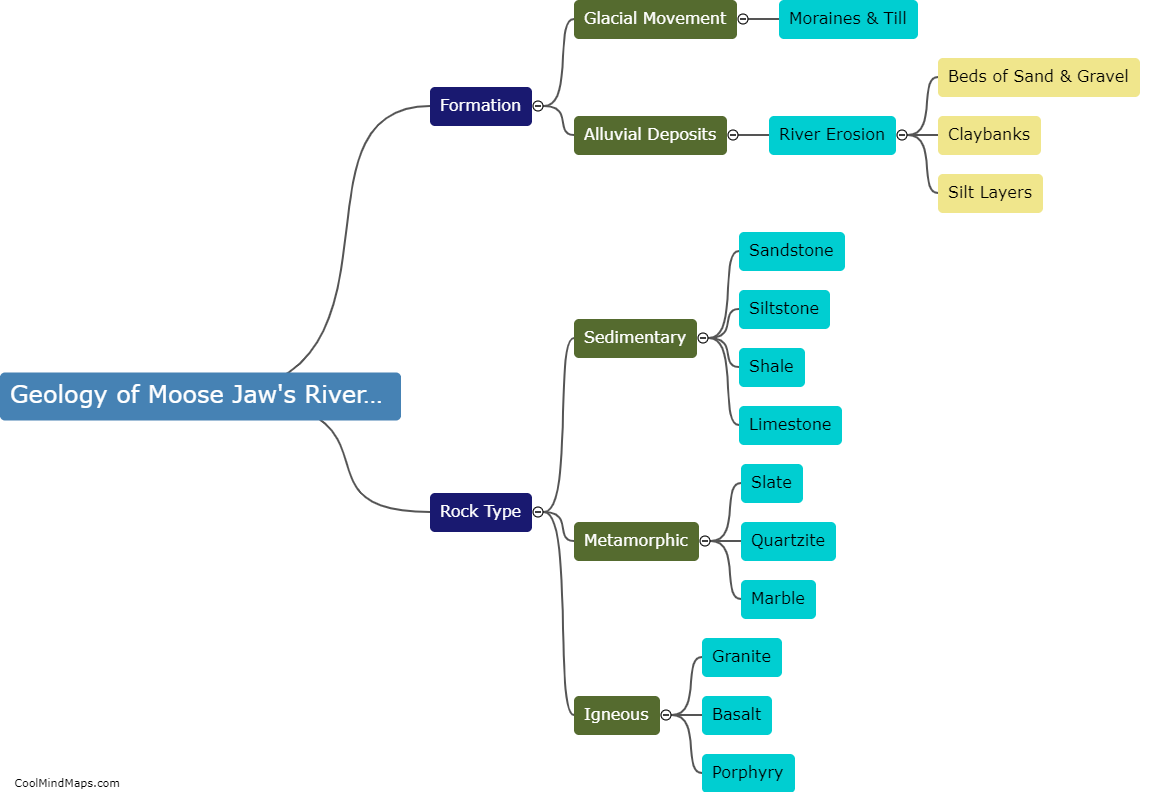
This mind map was published on 18 May 2023 and has been viewed 213 times.
